Queensland Bulls top 50, last 45 years: Today No. 1-10
Here it is, the top 10 Queensland cricketers since 1975 who have been plucked from a galaxy of stars. The naming of the top 10 completes a four-part series on our best across the last 45 years.
Other Sports
Don't miss out on the headlines from Other Sports. Followed categories will be added to My News.
Here it is, the top 10 Queensland cricketers since 1975 who have been plucked from a galaxy of stars.
The naming of the top 10 completes a four-part series on our best across the last 45 years.
There have been some unlucky omissions.
Top of mind was the ageless Mal Francke who bounded in to bowl leg spin season after season, decade after decade, but missed the 1975-76 cut off along with Sam Trimble and Tony Dell.
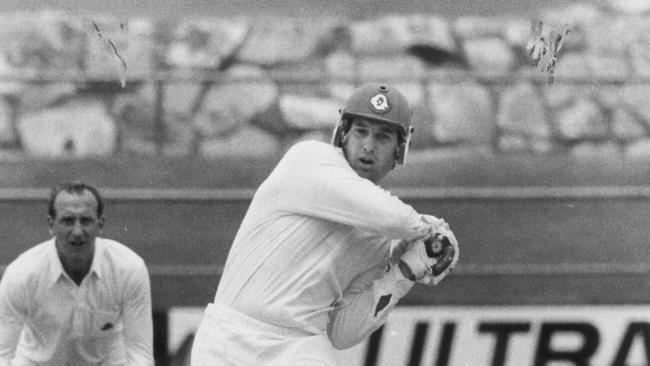
Brett Henschell was a grand Queensland performer, with bat and ball, across 62 matches.
Glenn Trimble was a brilliant talent who played one-day cricket for Australia.
RELATED LINKS
Bulls’ best player since 1975: No. 36-50.
Bulls best players since 1975: No. 21-35
Bulls best players since 1975: No. 11-20
Chris Swan was a ripping good bowler, so was barrel chested Mick Polzin, left arm swing bowler Harry Frei along with stalwarts like Geoff Foley and Ryan Broad. And someone like Gavin Fitness had a special role to play in Queensland’s path toward a historic Shield in 1994-95.
But below are the top 10.
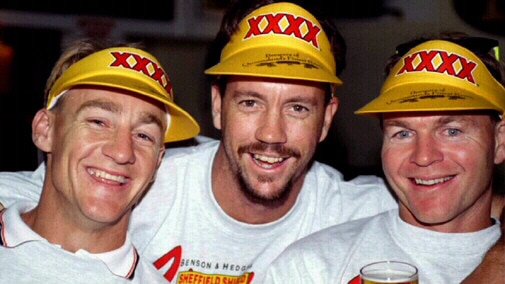
No. 10
STUART LAW (Valley)
Queensland cricketers like Bill Brown watched and waited for 69 years before someone came along and captained the Bulls to a Shield title. That man was Stuart Law, and then he led Queensland to another four wins before his retirement. Simply put Law is an iconic figure in Queensland sport. The closest in elegance to the great Greg Chappell, Law was a schoolboy sensation who was playing first grade at Valley aged just 15 years.
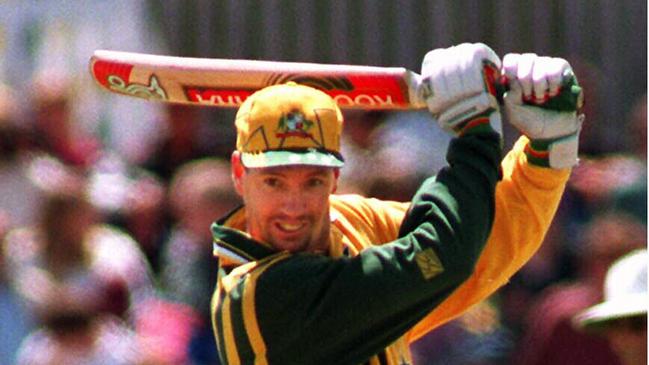
The son of the very talented Grant Law, his elevation into the state side was a matter of when, not if.
For 15 summers he toiled away for Queensland, amassing just under 10,000 Shield runs at 43. But he was better than that. On Shield final day – and he played in many deciders – Law rose to the occasion like all great big match players do, averaging 55-plus on the biggest stage. It remains an injustice he played just one Test – where he scored 54 not out – and for a time in his life it was a burden to him. But his amazing career tally of 27,080 first class runs at 50.52 highlights his class and should be a sense of pride to him. It is a great trivia question, who captained Queensland's first ever Shield winning side because the great Allan Border was present in the team. But Law had the C next to his name. As a leader he was a strong, but fair character. If you were a newcomer to the squad who waltzed in feeling entitled, good luck. But if you were a bloke who knew your place in the pecking order, worked hard – whether you succeeded or failed – Law had your back. Yes, he should have been given the chance to play 20, 30 or more Tests. But he wasn’t. But he is Queensland’s first ever Sheffield Shield winning captain, a Bulls batting great and no one can ever take that off him.
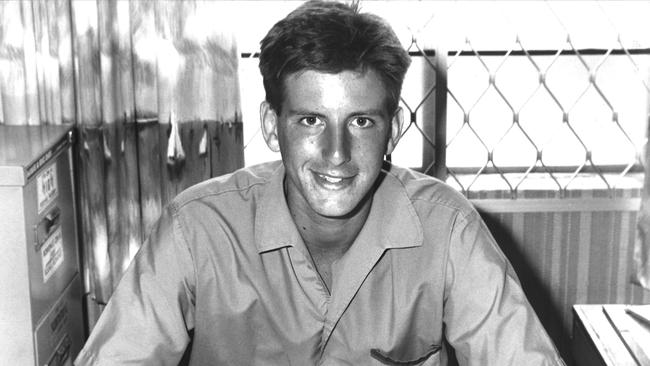
No. 9
MICHAEL KASPROWICZ (University)
Separating Michael Kasprowicz and Andrew Bichel for this purpose is a bit like searching for that one freckle or dimple to try and tell identical twins apart. Seriously, they were so similar in ability. Kaspa took 505 wickets at 24.44, Bichel 463 wickets at 23.44. For the sake of the argument, let’s go Kaspa No. 10 and Bichel No. 9 and get on with the story. Kasprowicz was a schoolboy prodigy plucked from Brisbane State High School to make his Sheffield Shield Adelaide. Those who pushed him through at the time showed shrewd judgment.
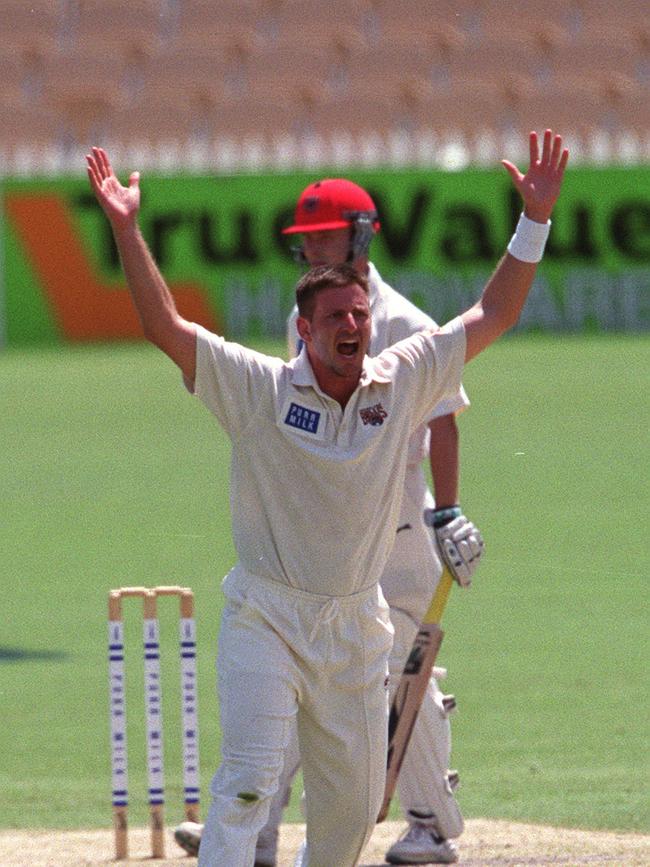
Tall, broad shouldered, Kaspa started as a fast bowler but as the years rolled out, and the more knowledge he gained from Rackemann, Thomson and Tazelaar, the smarter he became. Indeed so skilled was Kasprowicz that he was just as comfortable bowling on the sub-contentment, in England or at the Gabba. He played 38 Tests, but like Bichel he was blocked from playing more for Australia by Brett Lee who was preferred as the strike bowler around Glenn McGrath, Jason Gillespie and Shane Warne. But he was good enough to play more. Kasprowicz was also one of the nicest people you could meet, too nice to be a fast bowler. Yet he was able to mix both and the result was a perfect storm for Queensland cricket – a great personality to have on tour and a bowler with the heart of a lion. Although often batting no higher than No. 10 or No. 11, he did average 17. In 1996-97 I asked Queensland captain Stuart Law why he had delayed closing the innings in the Shield final. “Because I was laughing too much watching Kaspa bat,’’ came the reply. And Kaspa did not mind one bit that he was having the Mickey taken out of him. He was that type of bloke.
RELATED LINKS
Family affair at the Dooley household
Jack Clayton reflects on brotherly rivalry
Jeh siblings blessed with beginners luck
No. 8
ANDREW BICHEL (Souths)
Laidley product Andy Bichel was a fast bowling warhorse who developed his batting to such an extent that he could almost be classified as a genuine all-rounder. Bichel, who saved Australia's bat with both bat and ball at the 2003 World Cup, was as strong as an ox with a will to match. Put him on a flat track at Border Field or the Adelaide Oval, or on a green top at the Gabba, Bichel was at home in either environment because his will, desire and thirst for success remained the same – wherever he was. The most extraordinary thing about Bichel was his strike. Across taking 463 wickets for Queensland at an average 23.44, Bichel had a strike rate of 46. This is up there with the greatest bowlers in history.
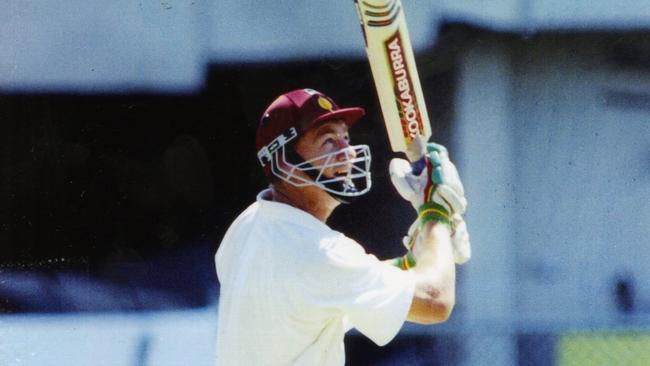
The key to Bichel’s bowling was he could get late outswing – in any conditions. He was a coaches dream, a captain’s dream. It could be session three, last hour on day four in 35 degree heat and Bichel would still be throwing the sightscreen at batsmen. He gave his all, and then some, and mostly with a smile on his face. A member of Queensland’s inaugural Sheffield Shield winning side in 1994-95, his elevation into the top 10 was the easy part. But where to place him was the hard part, so good was he.
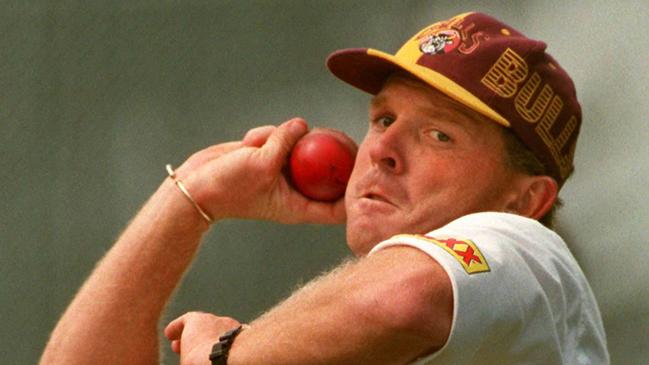
No. 7
CRAIG MCDERMOTT (Gold Coast)
Billy the Kid strode into town in the summer of 1983-84 and left 13 years later a national hero. A truly great fast bowler, McDermott was all fire and brimstone to start with. With a slab of zinc cream over his nose, he took on the best batsmen in the world. Sure he had his ups and downs, but when his career came to rest he had taken 291 wickets at 28.63 for Australia, and 329 scalps for his beloved Queensland at 26.05.

So successful was he at Test cricket, Queensland did not see him as often as skippers of the day would have liked. But when he donned the maroon cap he always left nothing in the tank. He is one of our absolute champions.

No. 6
CARL RACKEMANN (Wests)
The godfather of an elite crop of fast bowlers, Rackemann is a legend. From the land, Rackemann would grasp the cricket ball in his huge farmer’s hands and bowl all day and half the night if his skipper let him. A man with a huge heart and a love of his state, Rackemann burst onto the scene as a tearaway blond bombshell in the summer of 1979.

Seventeen summers later, he came to rest with 421 Shield wickets in his keeping. All the blood, sweat and tears were worth it for Rackemann when, in March, 1995, he took the catch which clinched the Bulls first ever Shield title. At the peak of his powers Rackemann was the fastest white bowler in the world. For the rest of his career, he was just fast and nasty for batsmen as he angled balls into the ribs from wide of the crease. In his first over of the 94-95 Shield final, he sent a delivery whizzing past the nose of South Australian batting ace Jamie Siddons, and within four deliveries had Siddons caught at the wicket poking tentatively at another rising ball. The joy on his face at game’s end when, along with his teammates, he had his picture taken with the Sheffield Shield is etched in the memory of those who saw it. Carl Rackemann is a living legend of Queensland cricket.
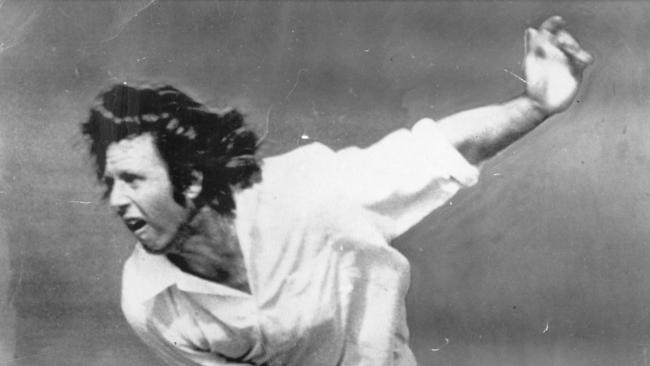
No. 5
JEFF THOMSON (Toombul)
Jeff Thomson was so fast he’d “frighten people out”. So says former Queensland captain and wicketkeeper John Maclean. Thomson was originally from Sydney but I always thought there must have been some type of mistake at Births, Deaths and Marriages because to me he always belonged in Queensland, so Queensland was he. He loved boating, he loved fishing, he loved the heat and the great outdoors. And he loved playing cricket for Queensland.
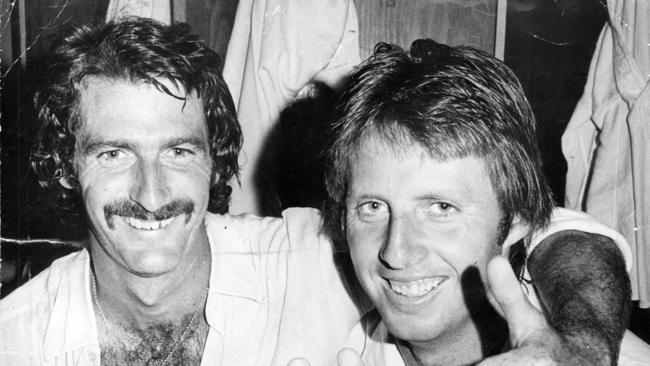
And Queenslanders loving him playing for them because it meant they only had to face him in the nets off a short run. Before becoming Thomson’s wicket keeper in Queensland, Maclean also batted against Thomson when he was playing for NSW in 1973-74 in Sydney.
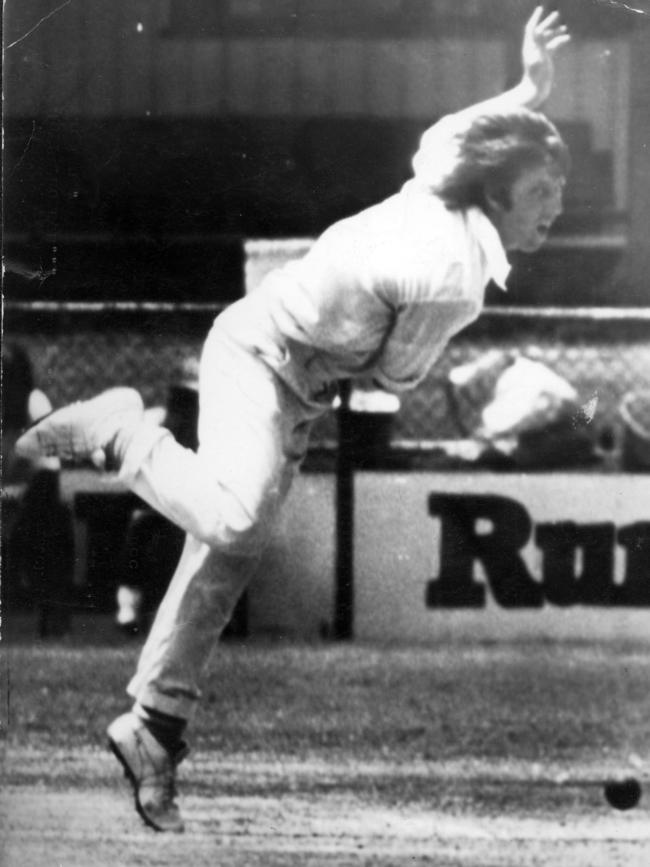
“The first ball he hit me in the shoulder, just below the jaw, and I had only lifted the bat six inches,’’ Maclean said. “And I thought this is survival, this is not about making runs. This is about getting out of here alive. He would walk out and bowl at 160 without warming up, and the thing with Thommo is he would get faster through a spell whereas most blokes tired.
“He was athletic enough that he just got that swinging action going.
“If he was 160kph at the start, he would be well over that midway through.’’
Maclean said Thomson was so fast that in Perth as keeper, he would stand back 30m with the gloves, although once in Sydney Maclean was forced back further.
“That day in Sydney I was going back probably a metre or two every ball because they were still going up over head height when they were hitting my gloves.
“He skidded and the ball kept going up. “Blokes thought we were joking (about his pace). They would come out thinking we were having a lend but that was how quick he was. Even the West Indies will tell you Thommo was the quickest.’’
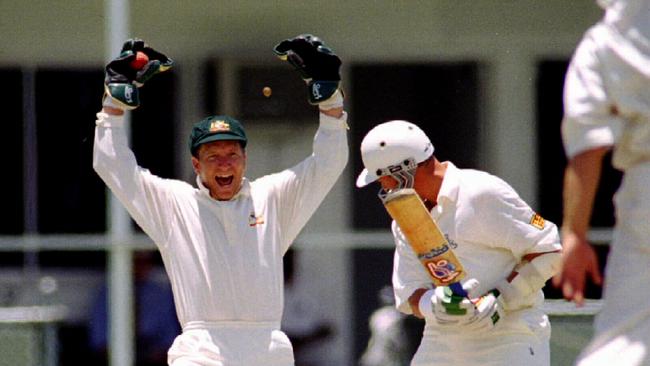
No. 4
IAN HEALY (Norths)
The Test wicketkeeper of last century loved Queensland with all his might. A boy from central Queensland via Brisbane State High School, he was a typical Queensland kid who played footy in the winter and cricket in the summer. He was a very good league player, and a First XV rugby player at BSHS, but cricket was his calling. Greg Chappell, then a Test selector, knew how good he was.
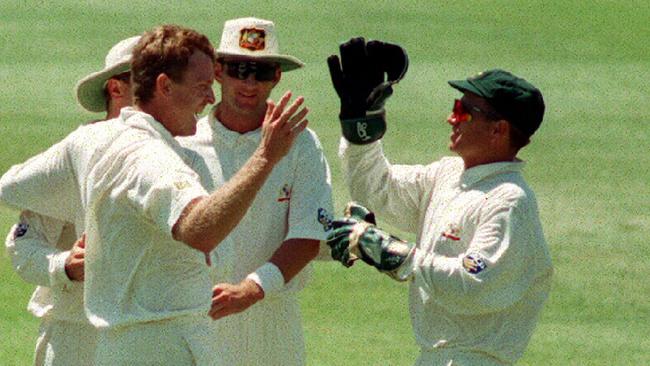
Healy was still a rookie when Chappell pushed him through the system to play for Australia before some thought he was ready. But with his work ethic, thirst for knowledge and ability, Healy was always going to be ready, He was magnificent standing up to the stumps to the great Shane Warne, and supreme standing back to the quicks, which is not surprising. When you are a young gloveman at the Gabba and you have Rackemann, McDermott, Tazelaar and Kasprowicz sending them down, you get plenty of practice catching. Healy was also an elite batsman who averaged 36 for Queensland. He loved playing for Australia, but give him a sniff between international commitments and he would be back behind the stumps for Queensland before the selectors had hung up the phone receiver to him. Queensland to the core and a good bloke to match.

No.3
MATTHEW HAYDEN (Valley)
Matt the Bat was a batting battleship who aside from mounting his own personal milestones, installed confidence in his peers by the aggressive manner in which he played. From Kingaroy country, Hayden overcame the disappointment of being dropped from the Marist College Ashgrove First XI and then missing Australian under 19 selection to become an iconic figure at Test level. Such were his batting deeds, there was a period when he was achieving things at Shield level not seen since Sir Donald Bradman.
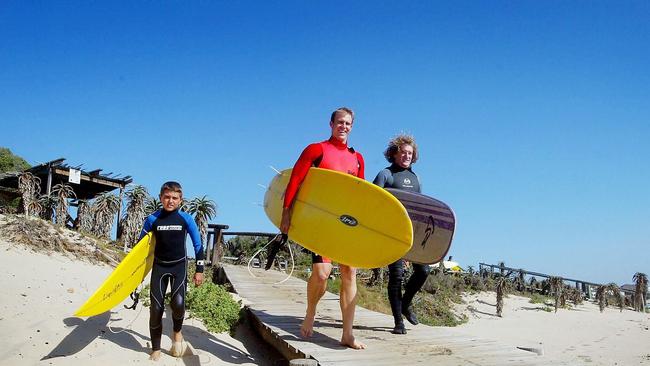
He was not an instant success at Test level either, and in fact had three goes at it before embarking on an extraordinary run at the top of the Australian batting order. He is a Test great, a Queensland cricket legend and a good bloke to be around who is happy with the simple things in life - as long as a fishing line, surf or a hotplate are within cooee of him.

No.2
ALLAN BORDER (Valley)
Another refugee from New South Wales who was Queensland to the core. Tough and unrelenting, Border spent 15 summers in the Gabba sunshine pouring blood and sweat into his pursuit of excellence for his state. If you wanted a batsman to bat for your life, Border was your man. He was a remarkable survivor who excelled when many around him failed, including scoring a remarkable 100 not out and 98 not out against the brutal West Indies. When his Test career finally finished, he joyfully played on for Queensland and was a backbone of the Bulls push toward a historic first ever Shield win in 1994-95, including scoring 98 to help set up the victory. But maybe his most valuable contribution came four days before the start of the match at training. A seasoned big match campaigner, Border was obviously concerned the Queensland players could be crushed by the pressure of expectation by hosting a Shield final. So gathered the Queensland team around and told them to enjoy every aspect of the week ahead. Sound advice indeed.

No. 1
GREG CHAPPELL (Souths)
First there was God Chappell, then there was King Wally Lewis. Queensland supporters of the 70s and 80s reverently referred to Chappell as God, so extraordinary were his batting deeds. Statistics tell only part of a story, but here is a statistic to chew on for those that never saw Chappell. His Sheffield Shield average for Queensland is 69 runs.

He achieved that in an era when the Australian Test bowlers played more Shield cricket in a summer than they did Tests or one-day internationals. Adelaide born and raised, business interests lured Chappell to Queensland in 1973, raising hopes the Shield drought which started in 1926-27 would end. Queensland never won the Shield on Chappell’s watch, but his recruitment was still a master stroke. Chappell remains to this day the most stylish and elegant batsman of the last 50 years. It was cricketing poetry watching him. Tall and slim, even his leaves outside off-stump were graceful. But there was also substance and toughness to him. He followed on from his brother Ian as Australian captain in 1977 when Ian retired. Then when Ian came out of retirement for World Series Cricket (1977-79) and played on for a Test series farewell in 1979-80 against the West Indies and England, Greg wondered if his older brother Ian should revert to Test captain again. “You keep it. It is a bludger of a job,’’ Ian quipped.
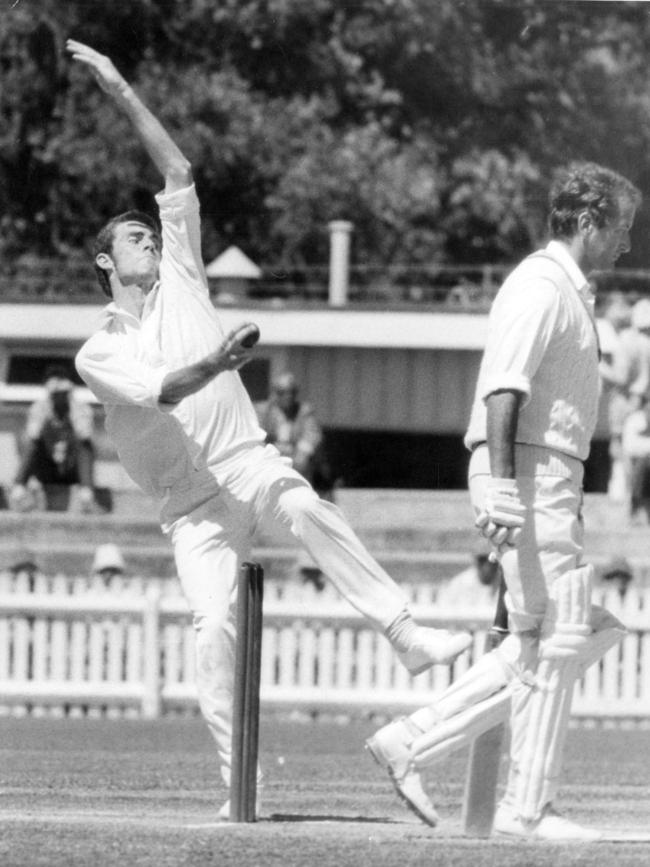
This writer rates Chappell the best batsman since Sir Donald Bradman for multiple reasons, one of which was his deeds in World Series Cricket. It was a bowler’s series and only Chappell, Viv Richards (West Indies), Barry Richards (South Africa), Lawrence Rowe (West Indies) and Kepler Wessels (Australia) averaged the same or more than their official Test averages. Chappell, who averaged around 57 in WSC, and the Richards batsmen’ were head and shoulders above all other batsmen – this against Roberts, Holding, Garner, Daniels, Le Roux, Proctor, Imran, Underwood, Rice. Domestically he spent from 1973 to 1984 trying to get Queensland its elusive Shield success, but despite moving mountains on occasions, not even Chappell could lead Queensland to glory. But his legacy lived on and on. When Stuart Law – ironically the closest batsman in style to Chappell – was out of form and lacking confidence ahead of the 1999-20 Shield final, he asked Chappell to the Allan Border nets to observe his batting. After a few minutes Chappell called the net session off, telling Law there was nothing wrong with his technique and he just needed to have faith in himself. Law, after struggling all season, went out in the Shield final two days later and scored 129 and 84 to bat Queensland to another Shield title. Law walked to the crease knowing he had the endorsement of Chappell, no higher cricketing authority. He was after all God Chappell.
Originally published as Queensland Bulls top 50, last 45 years: Today No. 1-10

